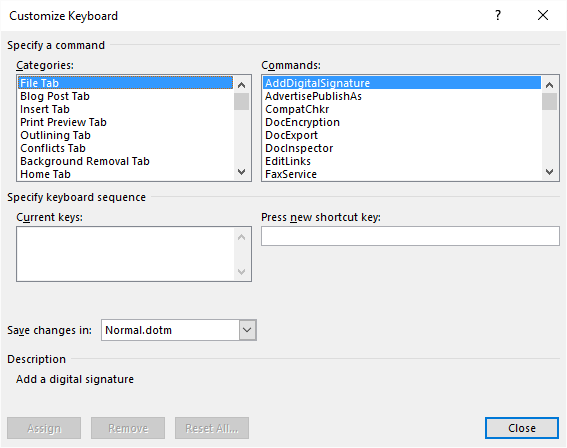Please Note: This article is written for users of the following Microsoft Word versions: 2007, 2010, 2013, 2016, 2019, and 2021. If you are using an earlier version (Word 2003 or earlier), this tip may not work for you. For a version of this tip written specifically for earlier versions of Word, click here: Resetting a Function Key.
Written by Allen Wyatt (last updated April 24, 2024)
This tip applies to Word 2007, 2010, 2013, 2016, 2019, and 2021
Peter noted that up to some months ago, while working on a Word document, he could select some text and, by pressing Shift+F3, change the case of the selected text. Now when Peter presses this function key it makes Excel launch. He wonders how he can reset the Shift+F3 function key so it works like it should work.
The first thing to check here is at what "level" the function key is operating. Function keys can have various purposes within Windows itself and within Word. If there is a conflict between the purpose of a particular function key in Windows and the purpose of that function key in Word, then the purpose in Windows takes precedence.
The easiest way to figure out the level at which the function key is operating is to just get out of Word (close the program completely) and then try the function key. If Shift+F3 still opens Excel while Word is closed, then the function key has been programmed within Windows to start Excel. This programming overrides anything that the function key may do within Word. Use these steps to correct the situation:
That should do it; you should be able to jump into Word and the function key should work as you expect. If it doesn't, then you should check to see if Shift+F3 has been customized within Word. Follow these steps:

Figure 1. The Customize Keyboard dialog box.
WordTips is your source for cost-effective Microsoft Word training. (Microsoft Word is the most popular word processing software in the world.) This tip (9474) applies to Microsoft Word 2007, 2010, 2013, 2016, 2019, and 2021. You can find a version of this tip for the older menu interface of Word here: Resetting a Function Key.

Discover the Power of Microsoft Office This beginner-friendly guide reveals the expert tips and strategies you need to skyrocket your productivity and use Office 365 like a pro. Mastering software like Word, Excel, and PowerPoint is essential to be more efficient and advance your career. Simple lessons guide you through every step, providing the knowledge you need to get started. Check out Microsoft Office 365 For Beginners today!
One way to insert the current date into your document is to use the Date and Time dialog box. The Default button in the ...
Discover MoreChanging the size at which your document is displayed is easy. What, though, of the elements that make up the Word ...
Discover MoreDo you have bothersome boxes appear around the text in your document? Here's how you can get rid of them and make your ...
Discover MoreFREE SERVICE: Get tips like this every week in WordTips, a free productivity newsletter. Enter your address and click "Subscribe."
There are currently no comments for this tip. (Be the first to leave your comment—just use the simple form above!)
Got a version of Word that uses the ribbon interface (Word 2007 or later)? This site is for you! If you use an earlier version of Word, visit our WordTips site focusing on the menu interface.
Visit the WordTips channel on YouTube
FREE SERVICE: Get tips like this every week in WordTips, a free productivity newsletter. Enter your address and click "Subscribe."
Copyright © 2026 Sharon Parq Associates, Inc.
Comments